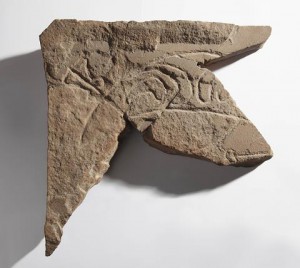 At present the Curatorial Team are supporting the research being undertaken by the University of Aberdeen’s Northern Picts Project. Skeleton fragments from the Museum’s Iron Age – Medieval collections for Inverness-shire and Easter Ross are undergoing radio carbon dating and isotopic and DNA analysis, in order to determine how old the burials they were contained in might be and also to identify where the individuals buried might have come from.
At present the Curatorial Team are supporting the research being undertaken by the University of Aberdeen’s Northern Picts Project. Skeleton fragments from the Museum’s Iron Age – Medieval collections for Inverness-shire and Easter Ross are undergoing radio carbon dating and isotopic and DNA analysis, in order to determine how old the burials they were contained in might be and also to identify where the individuals buried might have come from.
So far, we have received some interesting and surprising results regarding the remains recovered from the believed to be Pictish Cemetery at Garbeg, near Drumnadrochit. This group of seventeen heather-covered cairns, each surrounded by a circular ditch, has been interpreted as a burial ground of the Picts – the people who lived in the North of Scotland in the middle of the First Millennium AD.
It was excavated by archaeologists in the 1970s. During this excavation a fragmented carved stone, decorated with the left hand portion of a crescent & V-rod symbol, was found within one of the burial cairns, furthering the interpretation that the site and the burials must date to Pictish times.
However, the new findings coming back from the Northern Picts Project have dated the human remains from Garbeg to a later period, between the 11th and 12th Century, meaning that the individual whose remains were sampled, lived and died in the Medieval Period and was definitely not Pictish. There are still questions to be answered: was this Medieval burial a one-off? Was the Pictish stone found at the site brought in from elsewhere and re-used? Did the custom of Pictish burial in mounded cairns continue into the Medieval Period in the Highlands? We look forward to publishing more results from this exciting research project, here, in the future.
The Garbeg Pictish Stone – INVMG.1974.075 – is included in our permanent exhibition of Pictish Symbol Stones in the Ground Floor Gallery.
Find out more about the Northern Picts Project.

